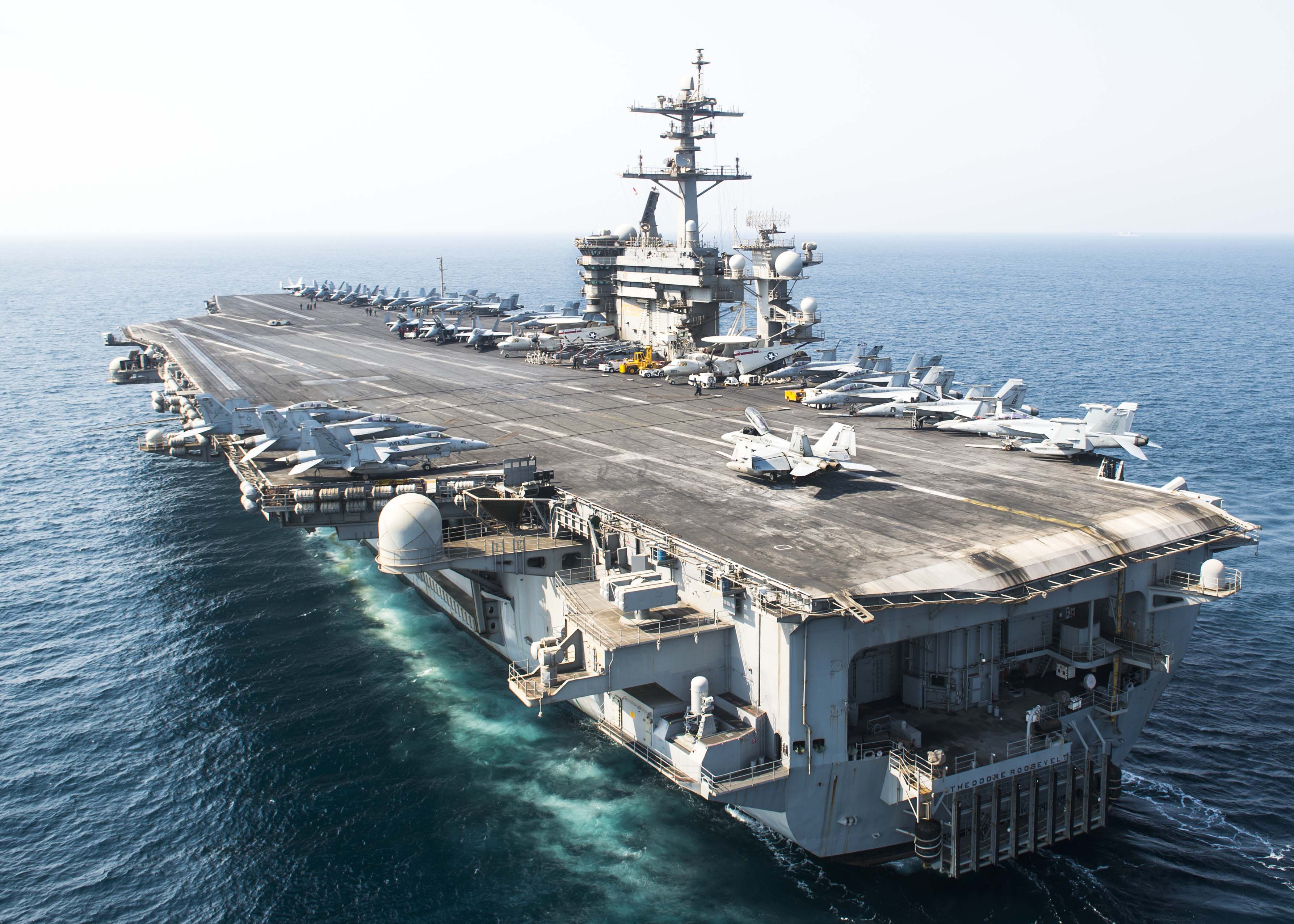
The Theodore Roosevelt Carrier Strike Group left U.S. 5th Fleet on Tuesday with no public timeline for when its replacement will reach the Middle East to continue U.S. air strikes against Islamic State in Iraq in Syria (ISIS) targets.
The Harry S. Truman Carrier Strike Group is slated to be the next CSG bound for the Middle East, but the Navy would not specify a deployment time other than later this year, a service official told USNI News on Tuesday.
“We’re not going to talk to future operations,” the official said.
While in 5th Fleet, the Roosevelt CSG was the largest symbol in the U.S.-led anti-ISIS collation responsible for “1,812 combat sorties totaling 10,618 combat flight hours, taking on 14.5 million gallons of jet fuel and expending 1,085 precision-guided munitions,” as part of Operation Inherent Resolve, according to a Tuesday statement from the service.
The ship is now bound for its new homeport at Naval Station San Diego, Calif.
Earlier this month the Truman CSG completed its Composite Training Unit Exercise (COMPTUEX), the complex training exercise that certifies the strike group for deployment.
The resulting lack of Middle East carrier presence — which could be up to two months or more — in U.S. Central Command has been a rare gap in the last decade.
Previous CSG and three-ship Amphibious Ready Group deployments were often extended to meet the demand of U.S. geographic combatant commanders (COCOMs) at the expense of maintenance setbacks and crew fatigue.
Within the last two years the Navy has retooled its deployment patterns to engineer more predictability in maintenance schedules for the ships and deployment schedules for sailors and Marines.
The emerging Optimized Fleet Response Plan would set a goal of seven-month carrier deployments as a part of a 36-month cycle to allow the crew, ships and aircraft of the CSG enough time to reset between deployments.
The Roosevelt and Truman deployments are not covered by OFRP but are keeping to a stricter schedule of deployments as the Navy is resisting urges to extend carrier deployments while the service catches up with a growing backlog of deferred maintenance.

Last year an extended maintenance period for USS Dwight D. Eisenhower (CVN-69) caused the Navy to delay its deployment for the Eisenhower CSG and instead moved the Truman CSG to follow the Roosevelt CSG.
As the Navy continues to implement stricter deployment tenants, more gaps in Middle East carrier presence may emerge, several service leaders told USNI News in September.
Last month Rear Adm. Jeffrey Harley, assistant deputy chief of naval operations for operations, plans and strategy (OPNAV N3/5B) told the House Armed Services Committee (HASC) that it would take a directive from the Secretary of Defense to the Navy to extend the deployment of a carrier to longer than seven months.
While extending a carrier is always an option, another option would be “to reduce our global input as to what we can provide [to the combatant commanders] for a designated period of time, and mitigate that presence, that carrier presence, in some other way using our joint partners, using joint aircraft to cover a gap in time in which we may not have a carrier present,” Harley told the panel.
While the length of the gap in the carrier presence in the Middle East is unclear, the three-ship Kearsarge ARG departed the East Coast last week and is ultimately bound for U.S. Central Command. The ARG reached the U.S. 6th Fleet area of operations on Oct. 13 and will support operations in both the Mediterranean Sea and the Middle East during its deployment.
Outside of the carrier gap issue, USS Theodore Roosevelt (CVN-71) is now ultimately bound for a new homeport in California in part of a three-carrier swap that moved USS Ronald Reagan (CVN-76) to a new homeport in Japan as the Navy’s forward-deployed carrier, while previously Japan-based USS George Washington (CVN-73) is bound for Newport News Shipbuilding to begin a four-year, multibillion-dollar midlife overhaul and refueling.





